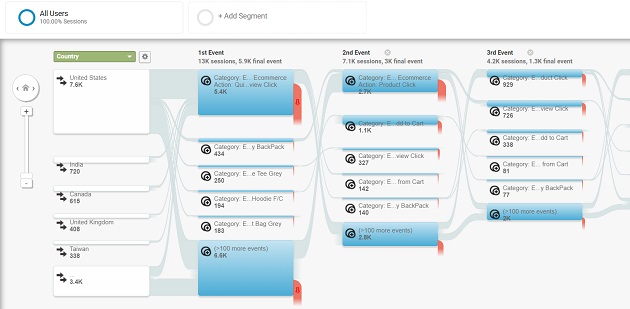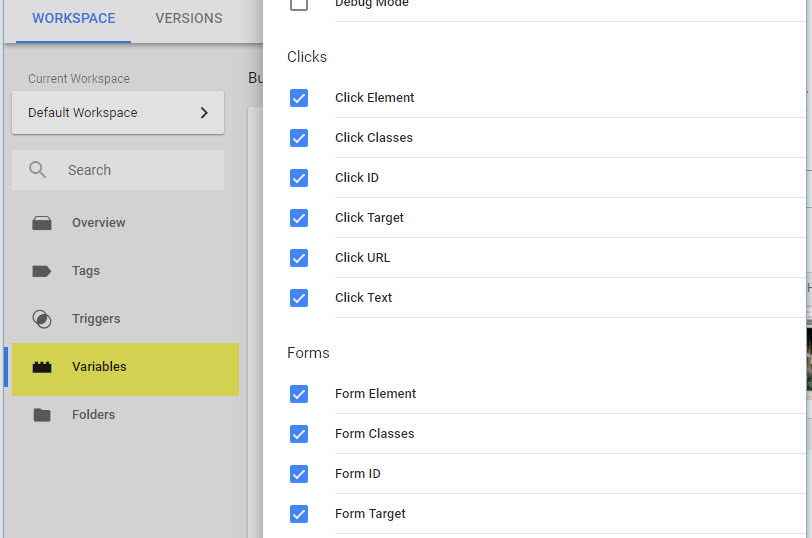How Google Analytics Event Tracking can Save You Time, Stress, and Money.
Table of ContentsThe Best Strategy To Use For Google Analytics Event TrackingGetting The Google Analytics Event Tracking To Work3 Easy Facts About Google Analytics Event Tracking ExplainedNot known Factual Statements About Google Analytics Event Tracking What Does Google Analytics Event Tracking Do?10 Easy Facts About Google Analytics Event Tracking Described

If you're going to set up event monitoring by hand, after that you're mosting likely to have to include some additional code to the components you wish to collect data from. The code you're mosting likely to function with will look something similar to this: There are four elements within that code bit that you're mosting likely to require to specify yourself: event, Classification, event, Action, event, Label and occasion, Worth.
As you can see, two of these are required (category and action) while tag and value are optional. Everything depends on the type of information you desire passed on back to Google Analytics when a customer clicks on the defined element (Google Analytics Event Tracking). It will certainly be a lot less complicated to define these components if you analyse your internet site and decide which elements/actions you desire to track
8 Easy Facts About Google Analytics Event Tracking Shown
Now, you'll be asked to define the and and you'll wish to pick from the drop-down menu that appears when you click on. This will certainly raise the exact same event tracking components we checked out earlier, which you'll need to fill in. Once you've defined these, you can relocate to the second box and select the trigger that will certainly discharge your tag.
On the following screen, you'll additionally have an area for naming your trigger and, if you click the box, you'll see a checklist of the different triggers you can choose. In this instance, we want to pick and after that pick the option listed below. You'll set the trigger to just fire when an element is clicked with an URL that consists of the.
Every web site talks. Prior to data analytics, we couldn't listen to the voices of our websites. Just how do you read the article recognize what your site is saying? Easy - Event tracking! Occasion tracking offers you an image of exactly how customers engage with your website and business (Google Analytics Event Tracking). Do you would like to know more? Read on as we discover everything you require to recognize, including what it is, why you must track events, exactly how to manage events information, and various other relevant Frequently asked questions you may have.
Google Analytics Event Tracking Things To Know Before You Get This
You can change between your occasion groups, activities, and tags in the Top Occasions report. The Event Pages report displays the pages where events are caused.
Occasions in Google Analytics have four primary components. Google Analytics utilizes these codes to track customer interactions and team them into event reports (Google Analytics Event Tracking).
After that, select "Variables" > "Configure". A checklist of the parameters you can track on your site is on the. Under Clicks, Forms, and Video clips, double-check each criterion. After examining all necessary fields, you can click "X" to close the window and return to the Summary menu on the.
The Of Google Analytics Event Tracking

If you have not done so, you may require to set up a variable in the Google Analytics Setups box. After this, enter your GA tracking ID in the Tracking ID field.
To do this, follow the next series of activities: After configuring the fields, pick the "Triggering" section. When configuring your brand-new trigger, click the "+" switch, then the "pencil" switch, then select your trigger kind.
See This Report about Google Analytics Event Tracking

When it familiarizes which sections and components are leading clients with your conversion funnel, you still won't understand. So, without occasion tracking, GA reports will just count visits as single-page sessions, also if customers invest a great deal of time on one get more page and involve with it significantly (and a bounce).
How does occasion monitoring attain this?Single-web page sessions recognized as bounces start and conclude on the exact same web page. Without occasion monitoring, GA will identify a customer's see as a bounce if they don't browse to an additional web page, despite exactly how they interact with it. A video-rich page can have a greater bounce rate if events are not tracked.
10 Simple Techniques For Google Analytics Event Tracking
For GA to take occasion hits into account when determining bounce rates, you should select "Non-interaction event" as "False" during the GTM setup. Setting "occasion objectives" with event action is an exceptional method to monitor user tasks you value highly, such as new lead entries or clicks on a telephone call to activity.